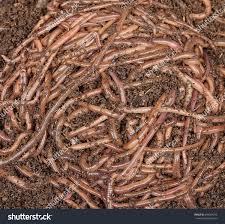VERMICOMPOSTING
Vermicomposting is a process by which all types of biodegradble waste such as farm waste, kitchen waste, market waste, livestock waste etc are converted to nutrient rich vermicompost by using earthworms as biological agents. Eudrillus eugineae is the best species of earthworm under Kerala conditions.
Vermicomposting of farm waste
Pits of size 2.5cm length, 1m width and 0.3m depth are taken in thatched sheds with sides left open. The bottom and sides of the pit are made hard by compacting with wooden mallet. At the bottom of the pit a layer of coconut husk is spread with the concave side upward to ensure drainage of excess water and for proper aeration. The husk is moistand and above this,biowaste mixed with cowdung in the in the ratio of 8:1 and is spread up to a height of 30cm above the ground level and water is sprinkled daily. After the partial decomposition of waste for 7-10 days the worms are introduced at the rate of 500-1000 number/pit. The pit is covered with coconut fronds. Moisture is maintained at 40-50%. When the compost is ready it is removed from the pit along with worms and heaped in shade with enough light .The vermicompost produced has an average nutrient status of 1.5% nitrogen, 0.4% P2O5, 1.8% K2O with pH7-8.
 |
| Eudrillus eugineae |
 |
| Vermicompost manure |

